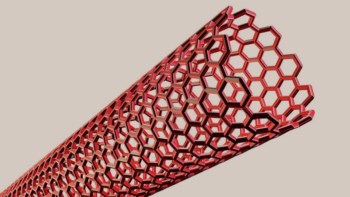
A new heat engine made from a single-electron spin – in the form of the valence electron of a calcium ion trapped in an electric field – could help us better understand how thermal fluctuations affect the performance of microscopic motors. The device, made by researchers at the University of Mainz in Germany, converts heat deposited into the electron spin by controlling its alignment via laser beams. The vibrations of the spin act like a flywheel that captures the useful energy generated by the engine.
Heat engines convert thermal energy into mechanical work and consist of four fundamental components: a working agent (such as the steam in a turbine); hot and cold heat reservoirs; and a mechanism for depositing or extracting the work generated.
Researchers have recently succeeded in fabricating microscopic heat engines and are now able to make such engines from atomic systems too. Indeed, a single-ion heat engine and an ion-crystal based refrigerator have already been made. Engines based on ensembles of nitrogen-vacancy centres in diamond, superconducting circuits or ensembles of nuclear spins in a nuclear magnetic resonance (NMR) set up have also been studied.
Thermal fluctuations are important
As the size of the constituent components decreases, well-established notions such as ‘work’, ‘heat’ and ‘efficiency’ will need to be reassessed, says a team led by Ulrich Poschinger in Mainz and John Goold in Dublin, whose group did the theoretical calculations in this study. In particular, the thermal fluctuations, which play a central role in microscopic-sized systems, will need to be accounted for and modelled.
In the new engine, the spin (or angular momentum) of the valence electron of the calcium ion plays the role of the working agent. This spin converts heat absorbed from applied laser beams into harmonic motion of the spin. These oscillations act like a flywheel that captures the useful work produced by the device and the energetics of the flywheel can be measured at a resolution below the single quantum level.
Measuring power output and useful work
Poschinger and colleagues say they can measure the power output of their atomic motors at the scale of single quanta of energy for the first time. They can also characterize the state of the calcium ion in their experiment and can thus precisely monitor the energy deposition process as the engine begins to operate – starting from energies close to the quantum ground state.

Quantum heat engines beat classical counterparts
Starting the flywheel from rest (that is, from its ground state), the researchers characterized its states after different operation times by reconstructing its so-called Husimi Q function, from which they were able to extrapolate the energy deposited in the flywheel along with its fluctuations.
The measured fluctuations contain a significant thermal component, they say, which shows that not all of the energy transferred to the flywheel can be extracted as useful work. To quantify the actual work done by the engine, they thus determined its ergotropy – that is, the maximum amount of work that can in fact be extracted from it.
By characterizing their engine in this way, the Dublin-Mainz team says it hopes to better understand how the intrinsic fluctuations of the spin heat engine fundamentally limit its performance.
The device is detailed in Physical Review Letters.



